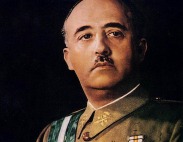
Franco’s Spain 1939 – 1975
Ask any Spaniard what they think of Franco, and they are sure to have an opinion. The Generalissimo held Spain under conservative dictatorship between 1939 and 1975, changing the face of the nation forever.
Francisco Franco was born on 4 December 1892 in Ferrol. His family had a strong naval history, and it was understood that he would take a career as a sailor. However, the Spanish Naval Academy closed before Franco came of age, so, in 1907 he joined the army instead. Franco’s early military career was successful and by 1926 he was the youngest general in Europe, with his ability and dedication making him popular.
After the Spanish General Elections of 1933 which had resulted in a right wing majority, Spanish Civil War broke out between the right wing Nationalists and left wing Republicans. Franco led the Nationalists to victory in 1939 and was officially recognised as head of state in 1945. The key to Franco’s rule involved silencing any who chose to rebel against the Nationalists and his law making reflected his strong Catholic beliefs.
Spain saw many changes under Franco’s rule – Castilian was named as the official language and local dialects were banned from public use. Parents were made to give their children approved Catholic names and women were expected to make home-making and obedience to their husbands a priority. Those who followed non-Catholic religions were scapegoated, and any person who spoke out would be severely punished, often by death. It is estimated that over 200,00 people died under Franco’s regime, although the true figure will probably never be known.
Franco held his position until his death in 1975, despite having suffered from Parkinson’s Disease for several years. He was succeeded by his chosen monarch Juan Carlos, who began to re-introduce democracy to Spain within the first years of coming into power. Franco was interred in the Valle de los Caidos, a monument which is considered to be controversial due to the fact that much of the construction work was done by political prisoners.
Although nearly 45 years have passed since Franco’s death, many people still feel that the shadow of his dictatorship still hangs over Spain. The last Franco statue, which depicted the former head of state riding a horse, was removed from its location in Madrid in 2005, yet for many families, the story is far from over as they seek to identify the remains of their loved ones, in the thousands of unmarked graves throughout the country.
 Follow
Follow


